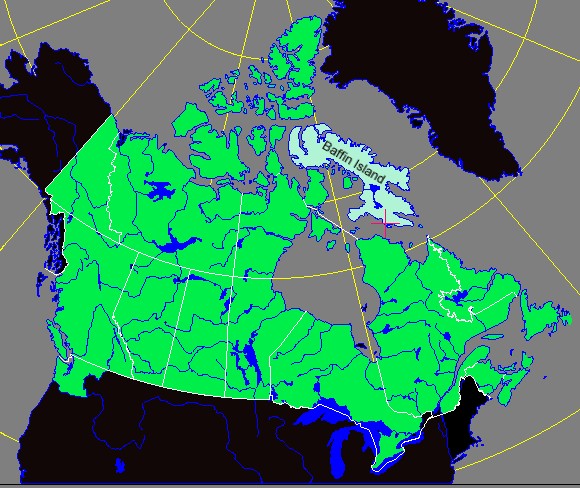
Baffin Island in Canada's frigid Nunavut territory is about as far off the grid as most people can imagine. Subzero temperatures, ice-blocked sea lanes, and a lack of conventional infrastructure make this spot more than 300 miles above the Arctic Circle among the planet's most inhospitable places to do business. That hasn't stopped international mining companies from fighting over the remote turf. The attraction: huge iron ore deposits (Mary River) underneath a barren landscape—a reminder of just how far global mining companies will go to secure new reserves.
After oil, almost nothing is as central to the operation of a modern economy as steel. Everything from appliances to automobiles to skyscrapers depend on the stuff. That has made iron ore, steel's main component, a hot commodity amid the current global resources boom, especially for fast-growing emerging economies.
The price of iron ore has more than doubled in the past two years amid surging Chinese steel production. Most ore exports come from Brazil and Australia, where the world's three biggest mining companies, Brazil's Vale (VALE) and Australia's Rio Tinto Group (RTP) and BHP Billiton (BHP), dominate. That's left other mining companies, steel producers, and big users such as China to fight over the few remaining big iron fields, including desolate Baffin Island.
Luxembourg-based ArcelorMittal (MT), the world's largest steelmaker, and Nunavut Iron Ore Acquisition, a company backed by Houston-based private equity firm Energy & Minerals Group, on Jan. 14 struck a C$590 million ($593 million) deal to jointly acquire Baffinland Iron Mines, whose Mary River project on the island may become the first iron-ore mine inside the Arctic Circle. The estimated cost of building the project, including an 87-mile railroad and a port that can be reached only by custom-built cargo ships able to navigate frozen seas, is more than $4 billion.
Other companies don't want to be left behind. Cleveland-based Cliffs Natural Resources (CLF) in mid-January agreed to pay C$4.9 billion, including net debt, for Montreal-based Consolidated Thompson Iron Mines to lock up iron ore assets in northern Quebec. And Liu Yikang, chief of the Expert Group for Overseas Resources Projects at China's Ministry of Land and Resources told Bloomberg News in mid-January that a Chinese company was involved in the bidding for Baffinland, though he declined to name it.
"There's nowhere else to go," explains Benjamin J. Cox, the founder of Portland (Ore.)-based research company Oren and chief executive officer of Canadian iron-ore mine developer Roche Bay. "There's no rock left unturned in Australia, and anything that's nice in Africa already is controlled."
Baffinland has so far spent almost $500 million evaluating Mary River. To get ore to the coast, Baffinland CEO Richard D. McCloskey says four rivers must be crossed. The company has resorted to using temporary bridges made from shipping containers welded together so rock samples can be moved by truck. Workers also must contend with temperatures that sometimes dip below -50C (-58F). At such temperatures, "steel starts breaking, fuel starts freezing," McCloskey says.
To guarantee deliveries, Mary River will need ice-breaking, bulk-commodity-carrying ships with three times the normal engine power, says Tim Keane, Arctic operations manager for Montreal-based shipper Fednav. Such vessels have never been built and, according to Keane, may cost up to twice the price of conventional vessels. "Ordinary ships don't have the horsepower required to muscle their way through those conditions," he explains.
Mary River has an estimated 365 million tons of reserves in its first deposit (eight others have been discovered so far), based on ore being transported by rail. Production could surpass 18 million tons a year on that basis. That would cause Canadian ore output, which the U.S. Geological Survey pegged at 27 million tons in 2009, to soar. Even so, it would be dwarfed by Brazil's 380 million tons and Australia's 370 million tons of annual production.
Asian steelmakers are already involved in Canadian iron ore. Tata Steel, India's biggest producer, has a joint venture with Canada's New Millennium Capital to mine in the provinces of Quebec, Newfoundland, and Labrador. China's Wuhan Iron and Steel, the world's fifth-biggest steelmaker, owns 19 percent of Consolidated Thompson and has agreed with Adriana Resources of Vancouver to develop the Lac Otelnuk iron-ore project in Quebec.
"There's a feeling in China that the Big Three have taken advantage of China in the past and that's something they want to avoid in the future," says Adriana CEO Allen J. Palmiere, referring to the dominance of Vale, Rio, and BHP.
ArcelorMittal, meanwhile, is reducing its reliance on third-party suppliers by raising its mining capacity. The company said in September it planned to spend $4 billion to increase output to 100 million tons by 2015.
Even before ArcelorMittal's initial bid in November, Baffinland had already attracted other steelmakers' attention. Germany's ThyssenKrupp and Voestalpine reached accords to buy some future output from the Baffin Island field, and Mitsubishi agreed to buy up to 1 million tons a year to sell in Japan and Taiwan. Notes Gordon A. McCreary, chairman of Toronto-based explorer Asia Now Resources and a former CEO of Baffinland: "Huge things are going on in the North."
The bottom line: The world's appetite for iron ore, used in steelmaking, has sparked interest in mining reserves in Canada's desolate Arctic Circle region.

No comments:
Post a Comment